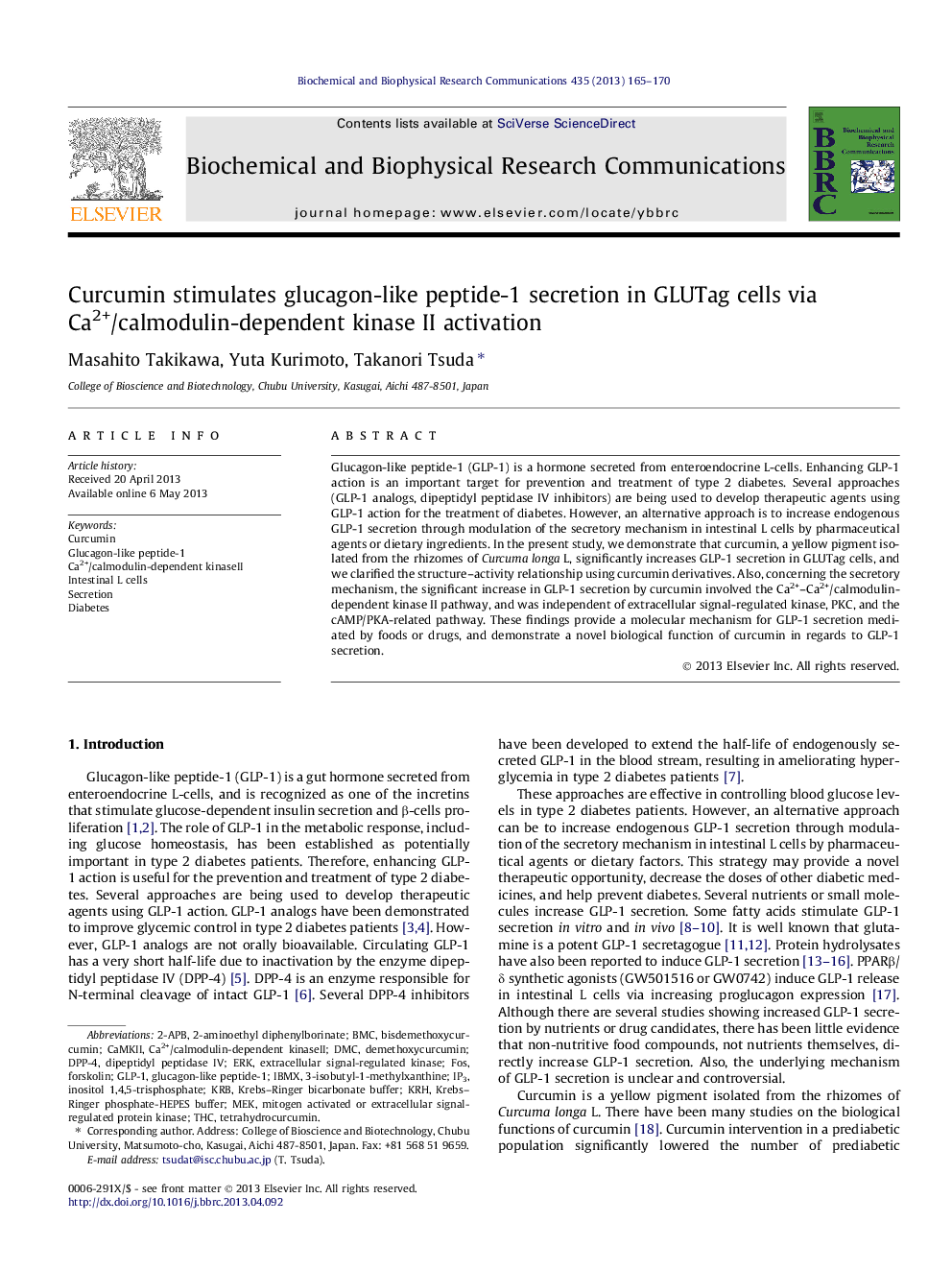| Article ID | Journal | Published Year | Pages | File Type |
|---|---|---|---|---|
| 1928694 | Biochemical and Biophysical Research Communications | 2013 | 6 Pages |
•Curcumin significantly increases GLP-1 secretion in GLUTag cells.•One OCH3 moiety and β-diketone structure are essential for the GLP-1 secretion.•Curcumin-induced GLP-1 secretion involves the Ca2+-CaMKII pathway.•Curcumin-induced GLP-1 secretion is not regulated by the PKA, PKCζ, or ERK pathways.
Glucagon-like peptide-1 (GLP-1) is a hormone secreted from enteroendocrine L-cells. Enhancing GLP-1 action is an important target for prevention and treatment of type 2 diabetes. Several approaches (GLP-1 analogs, dipeptidyl peptidase IV inhibitors) are being used to develop therapeutic agents using GLP-1 action for the treatment of diabetes. However, an alternative approach is to increase endogenous GLP-1 secretion through modulation of the secretory mechanism in intestinal L cells by pharmaceutical agents or dietary ingredients. In the present study, we demonstrate that curcumin, a yellow pigment isolated from the rhizomes of Curcuma longa L, significantly increases GLP-1 secretion in GLUTag cells, and we clarified the structure–activity relationship using curcumin derivatives. Also, concerning the secretory mechanism, the significant increase in GLP-1 secretion by curcumin involved the Ca2+–Ca2+/calmodulin-dependent kinase II pathway, and was independent of extracellular signal-regulated kinase, PKC, and the cAMP/PKA-related pathway. These findings provide a molecular mechanism for GLP-1 secretion mediated by foods or drugs, and demonstrate a novel biological function of curcumin in regards to GLP-1 secretion.
